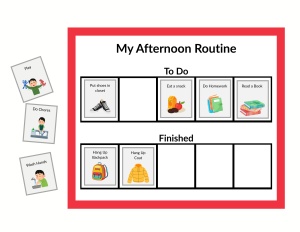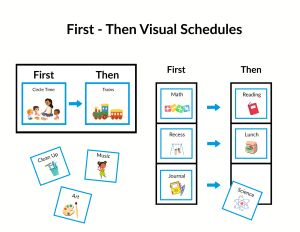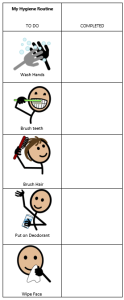Tools to Support Young People with Autism: Visual Schedules
April is Autism Awareness Month and at PEP, we’re proud of the services we provide that enable young people with autism to thrive. From our PEP Prentiss Autism Center, a Day Treatment Center specializing in students on the spectrum that integrates mental health and special education services during the school day, to our PEP Early Childhood Plus services that provide support to parents navigating their child’s autism diagnosis, PEP has deep knowledge and expertise around neurodivergence. For years PEP has held an internal contest called the “Tools to Use Challenge,” encouraging our experts to highlight the strategies they’re using to enhance the success of the young people on the spectrum.
This year, for Autism Awareness Month, we’re happy to share some of these strategies so that anyone in the community who works with or has a family member with autism can benefit. While it’s true these strategies are helpful for those on the spectrum, they’re also helpful for anyone! Feel free to adapt them to your needs and let us know how they work for you.
What are Visual Schedules?
A visual schedule is a sequence of photographs, drawing, symbols or text that is used to show a child what he or she is expected to do. The series of tasks are arranged in the schedule in the order they are to be completed. Since tasks are broken down visually, individuals can understand the order in which events should occur, which can help reduce anxiety.

Who are Visual Schedules For?
Everyone uses them! A daily planner or checklist, for example, are visual schedules that many people use. Visual schedules are especially helpful for people who have difficulty following directions, sequencing steps or have anxiety about time and changes in routines. People who are strong visual learners also benefit from visual schedules.

Why Use Visual Schedules?
Visual schedules are an intervention that can help individuals with (and without) autism follow a daily program, transition between activities, develop new skills, and reduce dependence on staff for prompting when completing a routine.
How Does it Work for the Student?
The student(s) look at the schedule to see what their next task is, complete that task, and then make a change to the schedule to indicate the task is complete. That change can be removing the picture, flipping over the item, lining it out, or checking it off. The student can do this with staff assistance, independently or as a part of a classroom routine.
This tool provides the student with a visual framework of a predictable list of expected behaviors, and a way to keep track of what is completed. Visual schedules can include a series of separate tasks that are part of a routine. They can also be used to teach a new skill by breaking down a single activity into smaller steps.

How Do I Use a Visual Schedule?
There are several types of visual schedules, which vary depending on the needs of the person. (See the examples pictured on this page.)
- Written text only vs. pictures
- Two-step task schedule (first ______, then _____ ) vs. multiple tasks
- Micro-schedule to break down steps of one activity vs. daily schedule with all activities
This article from Autism Speaks has additional information about visual schedules and how to use them.

Learn More
Learn more about Positive Education Program and its autism services on our website.
Reviewed and updated by Ryan Winkleman, instructional coach, PEP Prentiss and Kayla Searfoss, speech therapist, PEP Prentiss. Originally contributed by Lori Murphy (former) PEP, instructional coach, PEP Phoenix.
